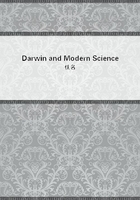
第195章
The voyage fortunately extended to a much longer period (five years) than the two originally intended, but after being absent nearly three years, Darwin wrote to his sister in November, 1834, "Hurrah! hurrah! it is fixed that the 'Beagle' shall not go one mile south of Cape Tres Montes (about 200 miles south of Chiloe), and from that point to Valparaiso will be finished in about five months. We shall examine the Chonos Archipelago, entirely unknown, and the curious inland sea behind Chiloe. For me it is glorious. Cape Tres Montes is the most southern point where there is much geological interest, as there the modern beds end. The Captain then talks of crossing the Pacific; but I think we shall persuade him to finish the coast of Peru, where the climate is delightful, the country hideously sterile, but abounding with the highest interest to the geologist...I have long been grieved and most sorry at the interminable length of the voyage (though I never would have quitted it)...I could not make up my mind to return. I could not give up all the geological castles in the air I had been building up for the last two years." ("L.L." I. pages 257-58.)In April, 1835, he wrote to another sister: "I returned a week ago from my excursion across the Andes to Mendoza. Since leaving England I have never made so successful a journey...how deeply I have enjoyed it; it was something more than enjoyment; I cannot express the delight which I felt at such a famous winding-up of all my geology in South America. I literally could hardly sleep at nights for thinking over my day's work. The scenery was so new, and so majestic; everything at an elevation of 12,000 feet bears so different an aspect from that in the lower country...To a geologist, also, there are such manifest proofs of excessive violence; the strata of the highest pinnacles are tossed about like the crust of a broken pie." ("L.L." I. pages 259-60.)Darwin anticipated with intense pleasure his visit to the Galapagos Islands. On July 12th, 1835, he wrote to Henslow: "In a few days' time the "Beagle" will sail for the Galapagos Islands. I look forward with joy and interest to this, both as being somewhat nearer to England and for the sake of having a good look at an active volcano. Although we have seen lava in abundance, I have never yet beheld the crater." ("M.L." I. page 26.) He could little anticipate, as he wrote these lines, the important aid in the solution of the "species question" that would ever after make his visit to the Galapagos Islands so memorable. In 1832, as we have seen, the great discovery of the relations of living to extinct mammals in the same area had dawned upon his mind; in 1835 he was to find a second key for opening up the great mystery, by recognising the variations of similar types in adjoining islands among the Galapagos.
The final chapter in the second volume of the "Principles" had aroused in Darwin's mind a desire to study coral-reefs, which was gratified during his voyage across the Pacific and Indian Oceans. His theory on the subject was suggested about the end of 1834 or the beginning of 1835, as he himself tells us, before he had seen a coral-reef, and resulted from his work during two years in which he had "been incessantly attending to the effects on the shores of South America of the intermittent elevation of the land, together with denudation and the deposition of sediment." ("L.L." I. page 70.)On arriving at the Cape of Good Hope in July, 1836, Darwin was greatly gratified by hearing that Sedgwick had spoken to his father in high terms of praise concerning the work done by him in South America. Referring to the news from home, when he reached Bahia once more, on the return voyage (August, 1836), he says: "The desert, volcanic rocks, and wild sea of Ascension...suddenly wore a pleasing aspect, and I set to work with a good-will at my old work of Geology." ("L.L." I. page 265.) Writing fifty years later, he says: "I clambered over the mountains of Ascension with a bounding step and made the volcanic rocks resound under my geological hammer!" ("L.L." I. page 66.)That his determination was now fixed to devote his own labours to the task of working out the geological results of the voyage, and that he was prepared to leave to more practised hands the study of his biological collections, is clear from the letters he sent home at this time. From St Helena he wrote to Henslow asking that he would propose him as a Fellow of the Geological Society; and his Certificate, in Henslow's handwriting, is dated September 8th, 1836, being signed from personal knowledge by Henslow and Sedgwick. He was proposed on November 2nd and elected November 30th, being formally admitted to the Society by Lyell, who was then President, on January 4th, 1837, on which date he also read his first paper. Darwin did not become a Fellow of the Linnean Society till eighteen years later (in 1854).
An estimate of the value and importance of Darwin's geological discoveries during the voyage of the "Beagle" can best be made when considering the various memoirs and books in which the author described them. He was too cautious to allow himself to write his first impressions in his Journal, and wisely waited till he could study his specimens under better conditions and with help from others on his return. The extracts published from his correspondence with Henslow and others, while he was still abroad, showed, nevertheless, how great was the mass of observation, how suggestive and pregnant with results were the reasonings of the young geologist.